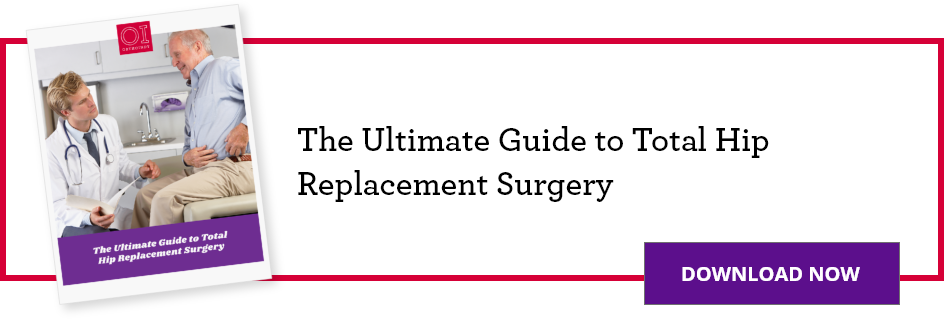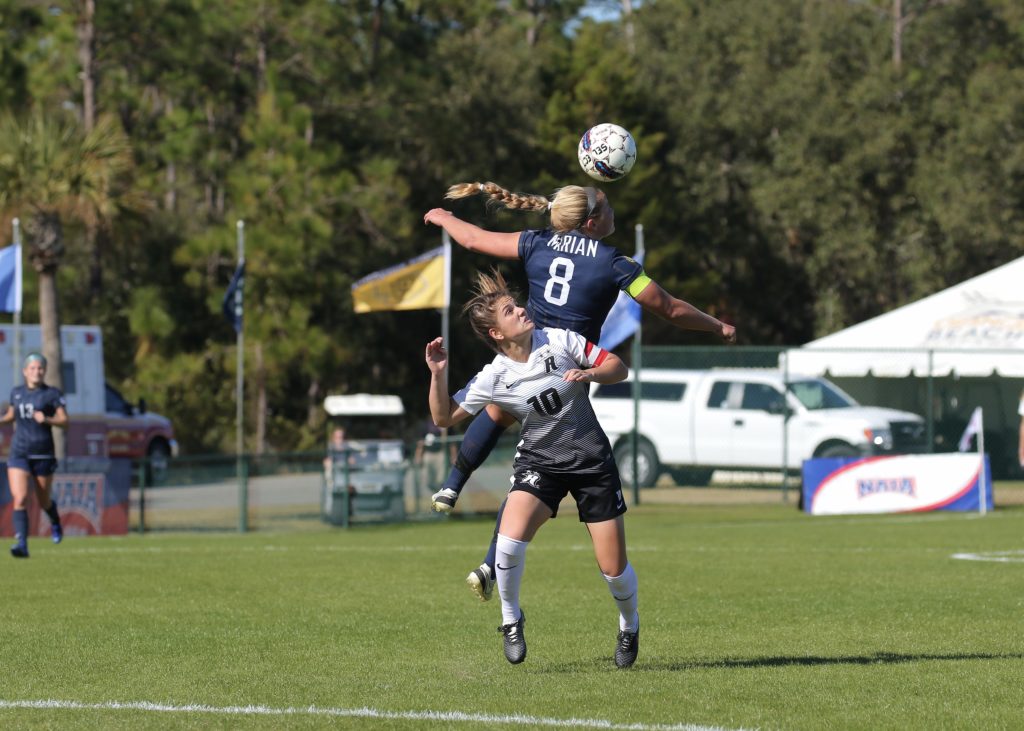THIS ARTICLE IS PART OF THE ULTIMATE GUIDE TO SPORTS MEDICINE
Amanda Annee has always enjoyed competition and an active lifestyle. Growing up she was willing to try any sport and during her high school years she played both basketball and soccer. When it was time to choose a college, Amanda knew she wanted to continue to compete and committed to Marian University to play soccer for four years.
However, in the middle of her junior year and at only 21 years old, Amanda started experiencing significant pain in her right hip. Although she tried to fight through the pain, it not only got in the way of her soccer training, but she was even having discomfort sitting while she studied.
“Even the short walk around Marian University’s campus or standing at family gatherings became too painful,” said Amanda. “I couldn’t sit with my hip in flexion due to the pain it would cause, therefore even riding in cars for an extended period of time was difficult. The 25 minute drive from my college to my family’s house would be painful as the driver or passenger.”

A diagnosis-hip impingement
In hopes of becoming pain free in time for her senior soccer season, Amanda nervously went to see Dr. Troy Roberson, an OrthoIndy sports medicine physician.
“I was frustrated emotionally because I was scared that nobody believed me that something was wrong due to it not being an acute injury. I was also nervous that the doctors may not find anything wrong and I would have to live with the pain forever,” said Amanda.
After looking at her MRI, Dr. Roberson diagnosed her with femoroacetabular impingement (FAI), also referred to as hip impingement.
“Hip impingement can be very painful and develops when extra bone grows along one or both of the bones that form the hip joint,” said Dr. Roberson. “The bones begin to rub against each other over time causing pain and damage to the joint. In some cases, this can lead to a tear of the cartilage and patients may benefit from surgery to address the underlying problem.”
Typically hip impingement is genetic and can worsen with activities such as sports participation, which was the case for Amanda.
“The pain would wear me down mentally since it was difficult to find relief from the discomfort regardless if I was playing soccer or even just sitting down to watch a movie. It was consistently on my mind.”
With the feeling that her body was giving up on her and the frustration both physically and emotionally, Amanda decided surgery was the best option.
“Historically, addressing these types of issues required a major surgery with a large incision and a lot of associated problems that can come from that,” said Dr. Roberson. “Thankfully though we are now able to address most of these types of issues arthroscopically, which significantly reduces the early pain and scar tissue formation.”
Amanda had surgery in February 2018 and slowly returned to her normal daily activities. She worked hard through physical therapy and eventually made it back in time to participate in her senior soccer season.
Amanda was even awarded an All-American, Defensive Player of the Year for their conference, 1st Team All-Conference and Defensive Player of the Week for the nation for the NAIA.
“Dr. Roberson made it feel as if I was making the right decision for myself,” said Amanda. “He was very personable at each appointment and was very easy to talk to and ask questions. He was very helpful in guiding me to success in my recovery so that I could play my senior year of soccer. Overall, I had a fantastic experience and I wouldn’t change it for the world.”
Another setback
Unfortunately, that wasn’t the end of Amanda’s journey with Dr. Roberson. During her senior year, she started to experience an all too familiar pain, but this time in her left hip.
Again, she went to see Dr. Roberson, who diagnosed her again with hip impingement and a possible torn labrum in her left hip. In March 2019, Amanda underwent surgery again.
“The bony deformity that ultimately leads to the impingement problem is often genetic and can also be associated with participation in athletics and similar activities,” said Dr. Roberson. “Therefore, it is not uncommon that people end up having the same problem come up on the opposite side or after having one side addressed, come back and realize the other side has been bothering them more than they had even realized before.”
Life after hip impingement surgery
After her second surgery, Amanda is feeling much better. She no longer experiences pain or discomfort. She was recently accepted to the University of Indianapolis where she plans to continue her studies and become an athletic trainer to help others get through sports-related injuries similar to hers.
Amanda also plans to continue her active lifestyle by playing basketball and soccer for fun. She even plans to pick up a new hobby of riding bike trails with her new mountain bike.
“My experience with Dr. Roberson was amazing. Dr. Roberson was there for me through both hip injuries and was always so kind and understanding. He would share with me what he found in each MRI and would point out what was abnormal and what he was worried about,” said Amanda.
“He would then allow me to talk and to explain to him where I was in life, my goals and aspirations, and what I may want to do in the following steps. After that, he would then share with me his thoughts and suggestions before we discussed a final plan together. I’d like to thank Dr. Roberson for giving me my life back at age 22!”
Learn more about Dr. Roberson and hip pain treatment at OrthoIndy.
Schedule an appointment
Your well-being is important to us. Click the button below or call us to schedule an appointment with one of our orthopedic specialists. If your injury or condition is recent, you can walk right into one of our OrthoIndy Urgent Care locations for immediate care. For rehabilitation and physical therapy, no referral is needed to see one of our physical therapists.


